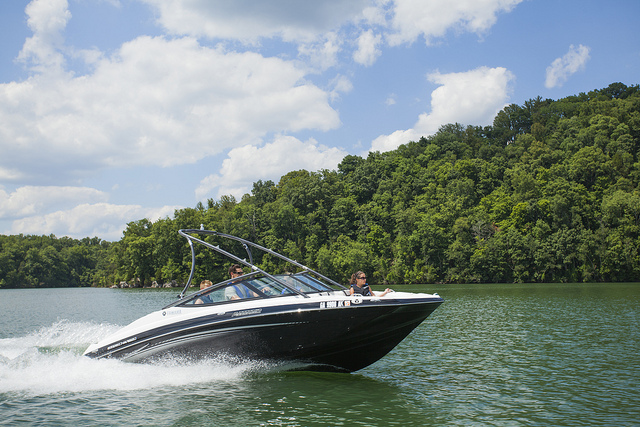 If you’ve been working with your hands for any length of time, then you know that the difference between a professional job and a DIY project isn’t binary, it’s a spectrum. On one end, you’re taking your team out to build a house on a client’s property, and on the other end, you’re building a birdhouse in your garage just because it seemed like a fun way to kill an afternoon. In the middle, you’ve got storage sheds, home repairs, additional rooms, doghouses and so on. At some point along that spectrum, insuring your project becomes a necessity, either for legal or pragmatic reasons. But where exactly is that point? What kind of DIY projects do you need to get insured, and which ones can you afford to not worry about?
If you’ve been working with your hands for any length of time, then you know that the difference between a professional job and a DIY project isn’t binary, it’s a spectrum. On one end, you’re taking your team out to build a house on a client’s property, and on the other end, you’re building a birdhouse in your garage just because it seemed like a fun way to kill an afternoon. In the middle, you’ve got storage sheds, home repairs, additional rooms, doghouses and so on. At some point along that spectrum, insuring your project becomes a necessity, either for legal or pragmatic reasons. But where exactly is that point? What kind of DIY projects do you need to get insured, and which ones can you afford to not worry about?
You have a few main concerns, here:
- Are you investing more than you can afford to lose?
- Is liability a concern?
- Will this affect any existing insurance policies you hold?
Take, for instance, building an additional room onto your home. This is going to have an effect on your existing homeowner’s policy, and if you don’t inform your insurer about your project, you may wind up invalidating that policy altogether.
On the other hand, spending a weekend erecting a doghouse in your backyard probably won’t affect your homeowner’s policy at all, and you’re probably not spending more than a hundred dollars on lumber and other materials. You may even be piecing it together from scrap wood left over from another project. The only concern here is liability, which might or might not be covered by your current homeowner’s policy. To play it safe you can always build a doghouse in the garage and wheel it out to the yard on a dolly to make sure you don’t wind up with barbecue guests stepping on a nail or something, but it’s generally worth checking your policy before starting any such project, just to be sure.
There are projects that may be covered by your homeowner’s policy in terms of liability, but wind up costing a little more than piecing a doghouse together out of scrap lumber. A shed, for instance, or costly home improvements. In these instances it’s down to peace of mind. Are you comfortable working without insurance, or would you like to have a safety net just in case?
If you’re bringing other people onto a project, then of course you’re probably going to want some basic liability coverage, but for more DIY projects than not, the rule of thumb is not to worry about insurance unless you feel uncomfortable without it, it’s required by law as with larger structures like guest homes, or it’s affecting a policy you already hold.
Read more
 Although the human body naturally cools itself, continuous exposure to extreme heat can overwhelm those mechanisms, leading to illness and even death.
Although the human body naturally cools itself, continuous exposure to extreme heat can overwhelm those mechanisms, leading to illness and even death.
The following are four types of heat-related ailments listed in order of severity (four being the most severe). Even a less severe condition can become more severe unless steps are taken to remedy the problem as early as possible.
Heat Cramps – painful muscles spasms in the arms, legs, or abdomen, often with dizziness, weakness, and profuse sweating. Such cramps actually occur more often in well-conditioned people after prolonged heat exertion and are caused by the loss of sodium through sweating. Increasing daily sodium intake slightly during hot weather exertion can help prevent cramping.
Heat Syncope – fainting caused when the body compensates for too much heat by diverting blood from the brain to the skin. Heat Exhaustion – extreme fatigue with muscle aches, nausea, and fever. Additional symptoms can include clammy skin, diarrhea, rapid pulse, vomiting, and weakness.
Heat Stroke – failure of the body’s temperature control systems. Symptoms can include disorientation, agitation, hyperventilation, racing pulse, lethargy, convulsions, and eventually loss of consciousness. The body temperature rises to extremely high levels, sometimes above 110 F.
Helping a victim of heat-related illness:
- Take the person out of the heat.
- Loosen their clothing.
- Apply cool, wet cloths (not freezing or cold) and/or soak the victim’s clothing with water.
- Elevate the feet eight to 10 inches.
- And, if the person is conscious and not vomiting, offer plenty of fluids.
Preventing heat-related illness:
- Wear loose-fitting, lightweight, light-colored clothing.
- Use sunscreen to prevent sunburn, which can hinder the skin’s ability to cool itself.
- Wear a hat that provides shade and allows ventilation.
- Limit vigorous activity during hot, humid weather.
- Drink plenty of water — even more than you need to satisfy your thirst — before, during, and after exercise. Drinks with sugar and/or caffeine will not help; they actually rob your body of fluids. Alcohol causes you to lose more fluid than you consume.
- Avoid hot, confined places. If you can’t, then work in shifts. Work a while, and then rest in a cooler place for a few minutes.
- Electric fans might provide comfort, but when the temperature is in the high 90s, fans will not prevent heat-related illness.
- Some prescription and over-the-counter drugs can interfere with the body’s ability to regulate temperature. Discuss with your doctor whether any of your medications might have this effect and, if so, be especially careful to limit your exertion and drink plenty of water.
At the first sign of heat illness such as cramps, nausea, dizziness, or severe headaches, get away from the heat. Find a cool spot and rest for a few minutes and get some fresh air. Remember, it is easier to prevent heat illness than to treat it once symptoms develop. And always seek immediate medical help if you develop any of the symptoms described above.
Read more
 There are many hidden costs associated with owning a boat: Dock fees, general maintenance, and winter storage, just to name a few. One expense that boat owners should never skimp on is purchasing the best available insurance policy for their watercraft.
There are many hidden costs associated with owning a boat: Dock fees, general maintenance, and winter storage, just to name a few. One expense that boat owners should never skimp on is purchasing the best available insurance policy for their watercraft.
Because buying a boat is a huge investment, owners should protect their boat with comprehensive insurance coverage. Plans are often based on the type and size of the boat. Many Homeowners and Renters insurance policies provide limited coverage for property damage if the boat’s engine is less than 25 mph horsepower or if it is a small sailboat, but without additional insurance, no liability coverage is included.
Owners of larger, more powerful boats and yachts will need to purchase a separate insurance policy for their boat. The insurance company will take into account the size and type of boat, its value, and where the boat sails when drawing up the conditions and cost of the policy.
Separate boat and watercraft insurance policies provide much more coverage to the owner. These policies generally include loss and damage coverage to the boat’s hull, machinery, furnishings, fittings, and any permanently attached equipment, like a navigation system. Liability coverage is extended to:
- Bodily injury to other persons
- Damage to other’s property
- Legal expenses associated with non-consensual operation of the boat
- Medical costs for injuries to the owner and passenger
- Boat theft
Policyholders can choose the liability limits of their plan, ranging anywhere from $15,000 up to $300,000. The deductible cost for property damage is $250, and it ranges between $500 and $1,000 for theft and medical expenses. Of course, policies can be individualized based on the boat owner’s needs. Other endorsements and coverages can be added to the policy to cover the boat’s trailer, fishing gear kept aboard the boat, and any other accessories. Also, make sure to ask whether or not the policy covers the boat while it is being towed.
Just as Auto insurance providers offer discounts to their policyholders, discounts for watercraft policies apply in certain cases. For example, insurance companies favor diesel-powered engines over gasoline ones because diesel fuel is more stable, making the engine safer to operate.
Other discounts are related to safety equipment kept on the boat. Having items like fire extinguishers approved by the U.S. Coast Guard and ship-to-shore radio equipment could reduce the amount of the premium. Also, completing a boater’s safety course offered by the Coast Guard Auxiliary, the American Red Cross, or the U.S. Power Squadrons can gain some favor with the insurance company. Maintaining a clean boating record is just as important as being accident-free on the roadways, when it comes to lowering insurance rates. Premiums are usually discounted for every two years the boater goes without an accident or filing a claim. Bundling your Watercraft insurance with Homeowners and vehicle policies is another good way to save money on coverage costs.
A solid insurance policy gives boaters the peace of mind needed to set sail and enjoy the open waters. Nothing is more relaxing than knowing your investment is covered. Get in touch if you have questions.
Read more
 If you’ve been working with your hands for any length of time, then you know that the difference between a professional job and a DIY project isn’t binary, it’s a spectrum. On one end, you’re taking your team out to build a house on a client’s property, and on the other end, you’re building a birdhouse in your garage just because it seemed like a fun way to kill an afternoon. In the middle, you’ve got storage sheds, home repairs, additional rooms, doghouses and so on. At some point along that spectrum, insuring your project becomes a necessity, either for legal or pragmatic reasons. But where exactly is that point? What kind of DIY projects do you need to get insured, and which ones can you afford to not worry about?
If you’ve been working with your hands for any length of time, then you know that the difference between a professional job and a DIY project isn’t binary, it’s a spectrum. On one end, you’re taking your team out to build a house on a client’s property, and on the other end, you’re building a birdhouse in your garage just because it seemed like a fun way to kill an afternoon. In the middle, you’ve got storage sheds, home repairs, additional rooms, doghouses and so on. At some point along that spectrum, insuring your project becomes a necessity, either for legal or pragmatic reasons. But where exactly is that point? What kind of DIY projects do you need to get insured, and which ones can you afford to not worry about?
 Although the human body naturally cools itself, continuous exposure to extreme heat can overwhelm those mechanisms, leading to illness and even death.
Although the human body naturally cools itself, continuous exposure to extreme heat can overwhelm those mechanisms, leading to illness and even death. There are many hidden costs associated with owning a boat: Dock fees, general maintenance, and winter storage, just to name a few. One expense that boat owners should never skimp on is purchasing the best available insurance policy for their watercraft.
There are many hidden costs associated with owning a boat: Dock fees, general maintenance, and winter storage, just to name a few. One expense that boat owners should never skimp on is purchasing the best available insurance policy for their watercraft.